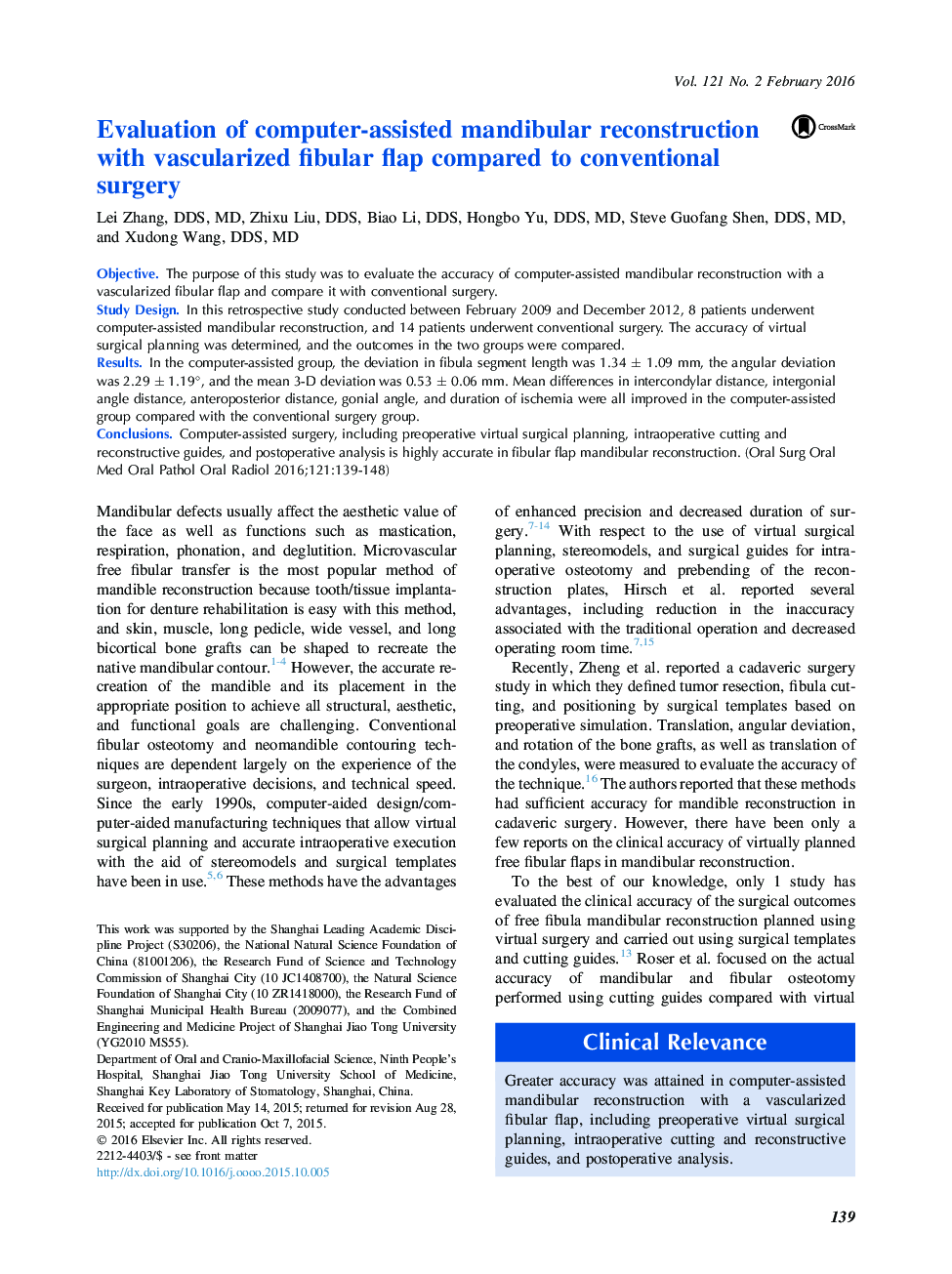| Article ID | Journal | Published Year | Pages | File Type |
|---|---|---|---|---|
| 3166588 | Oral Surgery, Oral Medicine, Oral Pathology and Oral Radiology | 2016 | 10 Pages |
ObjectiveThe purpose of this study was to evaluate the accuracy of computer-assisted mandibular reconstruction with a vascularized fibular flap and compare it with conventional surgery.Study DesignIn this retrospective study conducted between February 2009 and December 2012, 8 patients underwent computer-assisted mandibular reconstruction, and 14 patients underwent conventional surgery. The accuracy of virtual surgical planning was determined, and the outcomes in the two groups were compared.ResultsIn the computer-assisted group, the deviation in fibula segment length was 1.34 ± 1.09 mm, the angular deviation was 2.29 ± 1.19°, and the mean 3-D deviation was 0.53 ± 0.06 mm. Mean differences in intercondylar distance, intergonial angle distance, anteroposterior distance, gonial angle, and duration of ischemia were all improved in the computer-assisted group compared with the conventional surgery group.ConclusionsComputer-assisted surgery, including preoperative virtual surgical planning, intraoperative cutting and reconstructive guides, and postoperative analysis is highly accurate in fibular flap mandibular reconstruction.
